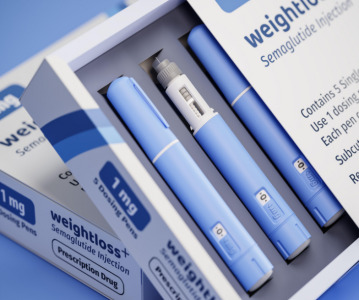Novel approach to creating sustainable packaging from rice husks
.png)
Researchers have created a new approach to the designing of eco-friendly nanofibres extracted from rice husks, addressing the critical need for sustainable packaging materials in food and biopharmaceutical products.
A team of researchers, led by YoungHoon Jung and HyeJee Kang from Kyungpook National University, have demonstrated a novel method of creating chitosan-based composite films utilising nanofibres extracted from rice husks. The method highlighted in their research is notable for its usage of an agricultural waste product in the production of a potential packaging material, promoting circular economic practices.
The process involves a chemical pretreatment of rice husks and enzymatic hydrolysis during a biorefinery process. This produces lignin-rich lignocellulose nanofibres. These nanofibres offer unique hydrophobic properties and strength. When incorporated into chitosan and formed into composite films, the material gives enhanced mechanical and structural integrity. By repurposing what would be a waste product, this process contributes to overall waste reduction and marks a step forward for sustainable resource management. Moreover, the controllable process developed by the researchers may also allow for customised film formation, increasing economic feasibility for the biomaterials industry.
Establishing a circular economy within the pharmaceutical supply chain has dominated talks around sustainability, with particular attention towards pharmaceutical packaging. The need for sustainable primary and secondary pharmaceutical packaging often present challenges related to scaling supply chain operations and safety and efficacy preservation of the drug products. This process demonstrates an innovative approach towards sustainable material development in tandem with the feasibility of creating composite films from waste products. For the pharmaceutical packaging sector, these composite films also offer unique UV-blocking properties, highlighting potential usage in pharmaceutical and biomedical device packaging. The lead researchers emphasised the significance of the study and innovative development method in paving the way forward for greener biomaterial packaging for food and pharma.
Sources:
1. Rice husk can be used as a promising sustainable packaging material [Accessed March 27, 2024] https://www.eurekalert.org/news-releases/1039048
2. Kang HJ, Lee YJ, Lee JK et al. Production of Chitosan-Based Composite Film Reinforced with Lignin-Rich Lignocellulose Nanofibres from Rice Husk, J. Bioresour. Bioprod. Published online 15 March 2024. doi: 10.1016/j.jobab.2024.03.002
3. The CPO Starter Pack: Why and When to Bring in a Contract Packaging Partner [Accessed March 27, 2024] https://www.cphi-online.com/the-cpo-starter-pack-why-and-when-to-bring-in-a-news120889.html
Related News
-
News Eli Lilly’s Zepbound makes leaps and bounds in weight-loss drug market
In the last week, Eli Lilly has announced their partnership with Amazon.com’s pharmacy unit to deliver prescriptions of Zepbound. Zepbound has also surpassed Novo Nordisk’s Wegovy for the number of prescriptions for the week of March 8.&nbs... -
News Coronary drug-coated medical device receives US FDA approval
Boston Scientific announced the FDA approval of their medical device AGENT Drug-Coated Balloon (DCB) for the indication of coronary in-stent restenosis in coronary artery disease patients. -
News CPHI Online Webinar Series – Innovative Strategies for B2B Pharma Marketeers
On February 20, 2024, CPHI Online hosted a webinar on Innovative Strategies for B2B Pharma Marketeers. Featuring expert speakers from across the pharmaceutical value chain, this webinar delves into how B2B pharma marketeers can create better content to... -
News Generics threat to Merck’s Bridion as Hikma seeks pre-patent expiry approval
Merck has disclosed they received notice from Hikma Pharmaceuticals for seeking a pre-patent expiry US FDA approval for Hikma’s generic version of Merck’s Bridion. -
News Wegovy® – the weight-loss drug sparking a global race to end obesity
Wegovy®, the weight loss drug from Novo Nordisk has been creating headlines since it’s early testing phases, through it’s approval in June 2021 by the US FDA and January 2022 from the European Medicines Agency, and it continues to do so... -
News US FDA approves three different oncology drugs in 1 week
In the last week, the US FDA has granted approval/accelerated approval to three different oncology drugs, each from different drugmakers with different indications. -
News What the Novo Holdings and Catalent deal means for pharma outsourcing
On February 5, 2024, Novo Holdings announced their intention to acquire pharma and biotech CDMO Catalent at US$16.5 billion. Read more about what this means for the pharmaceutical industry as a whole, from drugmakers to their partners in manufacturing.... -
News Key takeaways from Saudi Arabia's National Biotechnology Strategy
In January 2024, Saudi Arabia released its National Biotech Strategy, an ambitious plan to localise biomanufacturing, incentivise R&D and establish the Kingdom as the regional biotech leader by 2030, and an internationally recognised hub by 2040.
Position your company at the heart of the global Pharma industry with a CPHI Online membership
-
Your products and solutions visible to thousands of visitors within the largest Pharma marketplace
-
Generate high-quality, engaged leads for your business, all year round
-
Promote your business as the industry’s thought-leader by hosting your reports, brochures and videos within your profile
-
Your company’s profile boosted at all participating CPHI events
-
An easy-to-use platform with a detailed dashboard showing your leads and performance
.png)
.png)
.png)
.png)

.png)
.png)
